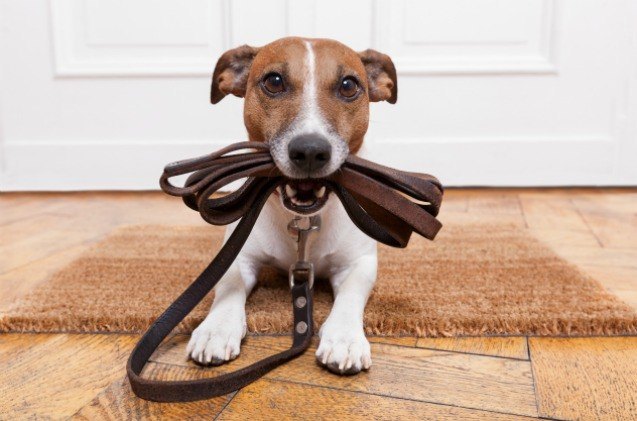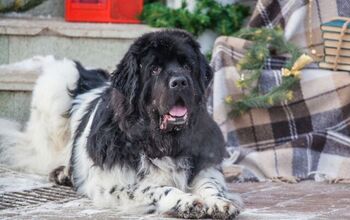Researchers Find Active Lifestyle Reduces Fearfulness In Dogs

It’s not uncommon for dogs to have noise sensitivities or fear of new situations. Sometimes being afraid to try and walk on a slippery surface or being afraid of heights is common too.
Now, researchers who looked at a behavioral survey of nearly 14,000 dogs found that many of these non-social fears can be associated with the dogs’ lifestyle, living environment and breed.
Emma Hakanen is a doctoral student from the Faculty of Medicine at the University of Helsinki. She said that dogs who engaged in activities and who were the most actively trained, however, were the ones found to be the least fearful.
Related: When Does Your Dog Need A Therapist?
Hakanen said that physical exercise has shown positive effects on the moods of both humans and dogs. Because dogs are social animals, they enjoy doing things with their owners and their owners don’t want them to be afraid or stressed as they do different things. Hakanen also said that because they don’t want to stress their dogs, sometimes, they’re less inclined to train with their dog.
But this nervousness on the part of owners means that puppies may not be sufficiently socialized and exposed to novel situations, loud noises, different walking surfaces, transparent or metal stairs and more. More activity and exposure could reduce that fear.
The survey results showed that fireworks and fear of slippery surfaces was the most prevalent fear of dogs who belonged to first-time dog owners. Professor Hannes Lohi is from the Faculty of Veterinary Medicine and Faculty of Medicine from the University of Helsinki.
He said that prior research found urban dogs were more fearful than rural counterparts, and interestingly, humans in urban areas tend to have more mental health problems than those in rural areas. This adds to the belief that the environment also plays into our fear levels–in our human selves and in our best dog friends.
Prior research has also suggested that non-social fearfulness is more common in female dogs who’ve been spayed and smaller dogs. Generally speaking, slippery or unfamiliar floor surfaces seemed to be a fear factor for most dogs. But, the survey found there were significances in dog breeds. For example, Cairn Terriers seemed to be among the most fearful breeds while Chinese Crested dogs were among the least fearful breeds.
Related: Top 10 Confident Dog Breeds
Lohi said their research supported the idea that breed-specific fearfulness may be inherited, however, improving the socialization, training and activity levels of dogs from puppyhood can significantly reduce social and non-social fearfulness.
So, socialize those puppies! Keep them active and help them be able to depend on an active, somewhat predictable lifestyle and routine for them to have less fear and anxiety in their life.

More by Lori Ennis






















